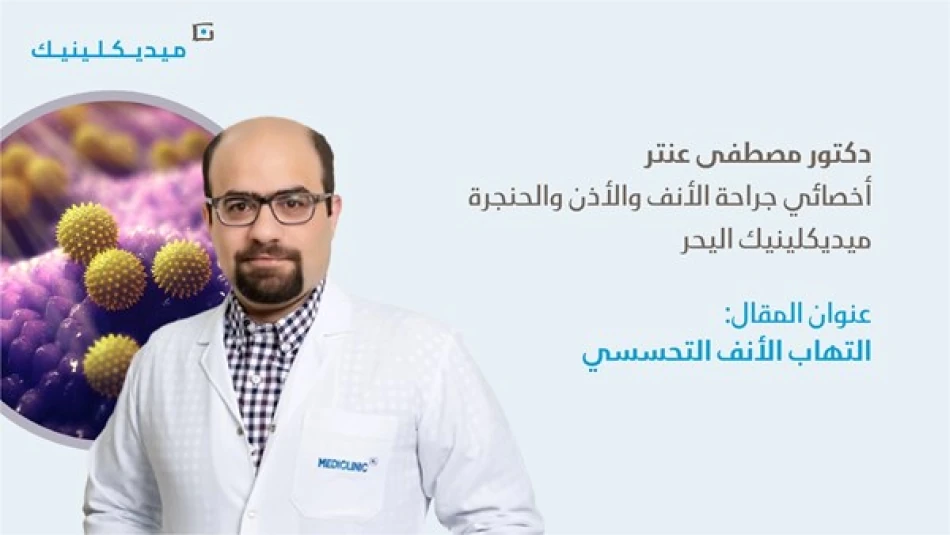
Unlock the Secrets to Alleviating Allergic Rhinitis: Causes, Symptoms, and Cutting-Edge Treatments
Why Allergic Rhinitis Is More Than Just "Seasonal Sniffles" — And How Modern Medicine Is Fighting Back
Affecting one in five people globally, allergic rhinitis has evolved from a minor seasonal nuisance into a year-round health challenge that disrupts sleep, work productivity, and quality of life. As environmental allergens intensify due to climate change and urbanization, medical professionals are deploying increasingly sophisticated treatment strategies that go far beyond basic antihistamines.
The Hidden Scale of a "Common" Condition
Allergic rhinitis — inflammation of nasal passages triggered by airborne particles — strikes approximately 20% of the global population across all age groups. The condition carries a particularly heavy burden for those already managing asthma or eczema, with genetic predisposition playing a significant role in determining who develops symptoms.
While most people first experience symptoms during childhood or early adulthood, the condition's severity fluctuates unpredictably throughout life. Some patients enjoy symptom-free periods, while others face intensifying reactions during their thirties and forties — prime career and family-building years when disruption carries the highest personal and economic costs.
Two Distinct Battles: Seasonal vs. Year-Round Warfare
Seasonal Allergic Rhinitis
Traditional "hay fever" remains tied to predictable pollen cycles from trees, grasses, and weeds. These cases often respond well to preventive treatment strategies, as patients can anticipate and prepare for known trigger periods.
Perennial Allergic Rhinitis: The Tougher Opponent
Year-round sufferers face a more complex challenge, battling dust mites, cockroach particles, pet dander, and mold — allergens that persist regardless of season. This form proves notably more difficult to treat, as complete avoidance of triggers becomes virtually impossible in modern living environments.
The Full-Body Impact Beyond the Nose
Modern understanding reveals allergic rhinitis as a systemic condition affecting multiple body systems simultaneously:
Nasal symptoms include the classic trio of congestion, runny nose, and sneezing, but extend to facial pressure, lost taste sensation, and post-nasal drip that triggers persistent throat clearing.
Eye involvement creates the telltale "allergic shiners" — dark circles under the eyes accompanied by itching, redness, and a gritty sensation that mimics dry eye syndrome.
Sleep disruption emerges as perhaps the most underestimated consequence. Mouth breathing, snoring, and frequent nighttime awakenings create a cascade of daytime fatigue that impacts work performance and mental health.
Treatment Revolution: Beyond One-Size-Fits-All Approaches
First Line Defense: Nasal Corticosteroids Take Center Stage
Clinical research has definitively established nasal corticosteroid sprays as superior first-line therapy, outperforming oral antihistamines in head-to-head studies. These medications deliver targeted anti-inflammatory action with minimal systemic absorption — a significant advancement over older treatment approaches that often caused drowsiness or other side effects.
Proper technique proves crucial for effectiveness. Patients achieve optimal results by clearing nasal passages with saline solution before application, ensuring medication reaches inflamed tissues rather than draining into the throat.
Strategic Combination Therapy
Modern treatment protocols increasingly employ combination strategies. Oral antihistamines excel at controlling itching, sneezing, and runny nose, while failing to address congestion. Pairing them with nasal corticosteroids or decongestants creates synergistic effects that single medications cannot achieve.
Newer antihistamine nasal sprays like azelastine and olopatadine offer rapid onset — working within minutes rather than hours — making them valuable for both daily prevention and as-needed symptom control.
Saline Irrigation: Ancient Wisdom Meets Modern Validation
Clinical studies have validated what traditional medicine long suspected: regular nasal saline irrigation provides substantial symptom relief while enhancing the effectiveness of other treatments. By physically removing allergens and irritants while moisturizing nasal tissues, saline washes address multiple aspects of the inflammatory process simultaneously.
Immunotherapy: Retraining the Immune System
For patients who don't respond adequately to conventional treatments, allergen immunotherapy offers a paradigm shift from symptom management to addressing root causes. This approach systematically desensitizes the immune system through controlled exposure to specific allergens.
Traditional injection protocols require months of weekly visits followed by years of monthly maintenance shots. Newer sublingual tablets offer convenience for certain allergens, though they require several months of daily treatment during relevant seasons.
The investment proves worthwhile for appropriate candidates: immunotherapy can provide lasting symptom relief that persists even after treatment completion — something conventional medications cannot achieve.
The Economic and Social Imperative
As climate change extends pollen seasons and increases allergen concentrations, the burden of allergic rhinitis continues growing. The condition's impact on workplace productivity, healthcare costs, and quality of life makes effective treatment not just a medical issue, but an economic imperative.
The evolution from simple antihistamine tablets to sophisticated, personalized treatment protocols reflects medicine's growing understanding of allergic rhinitis as a complex, multisystem condition requiring equally sophisticated solutions. For the millions affected, this represents hope for moving beyond mere symptom management toward genuine long-term relief.
Most Viewed News

 Layla Al Mansoori
Layla Al Mansoori






